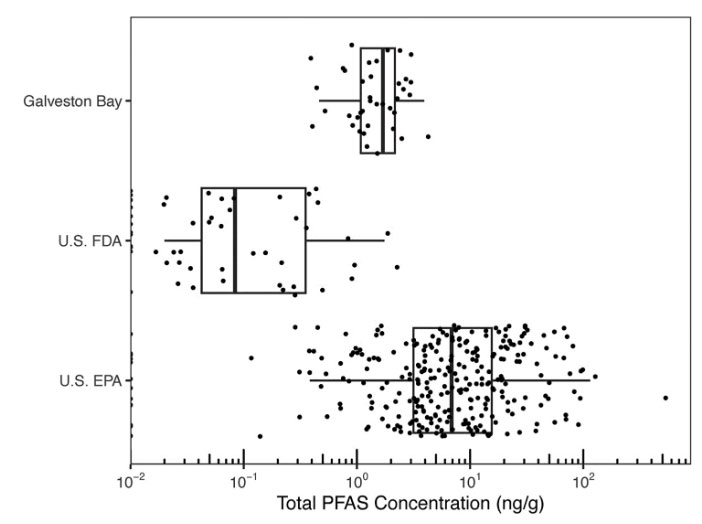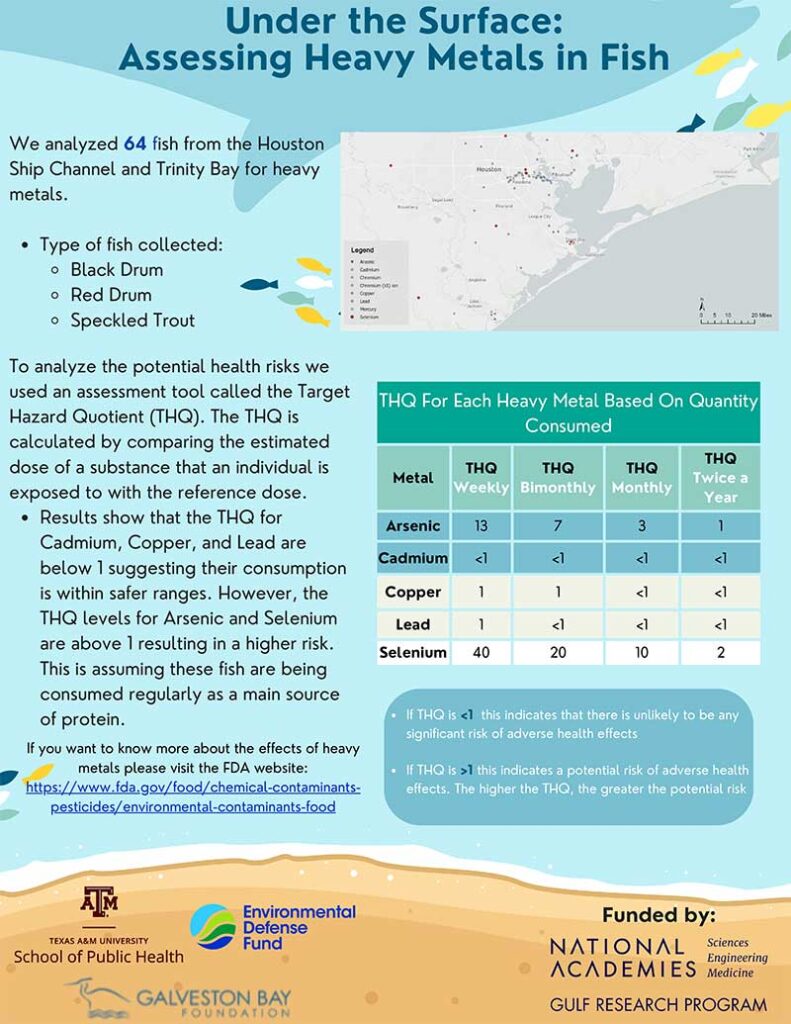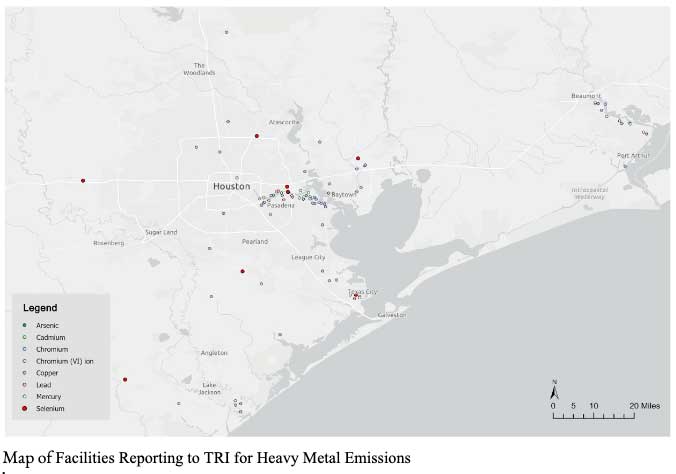How have chemical releases in the environment contaminated marine organisms?
Currently, the entire Galveston Bay Estuary is under a fish advisory from the Texas Parks and Wildlife, primarily due to potential contamination from PCBs and dioxins.
To understand the impact of heavy metal concentrations and the presence of per- and polyfluoroalkyl substances (PFAS), commonly known as “forever chemicals,” in fish, a study was conducted to assess the potential lifetime risks and identify plausible sources of these contaminants. The research aimed to evaluate how these substances could affect human health over an extended period.

The infographic illustrates the potential lifetime risks associated with consuming fish, based on their metal concentrations, using a Target Hazard Quotient (THQ) methodology. It highlights that a THQ value below one suggests minimal to no risk, whereas values above one could indicate heightened health risks. It is important to note these results represent lifetime chronic exposures, and the risk for those who occasionally consume these fish is negligible based on these findings.
The mean concentrations of metals in fish, including Cadmium, Copper, Mercury, and Lead generally fall within the safe limits set by the Texas Commission for Environmental Quality (TCEQ), indicating a lower risk. However, the concentrations of inorganic Arsenic and Selenium notably exceed the TCEQ’s safety thresholds, which could raise environmental or health concerns within Texas and highlights the need for careful monitoring and potential regulatory measures. Other metals levels in the fish were within Texas standards.
The study found that total per- and polyfluoroalkyl substances (PFAS) concentrations were on average lower than EPA national freshwater survey, but higher than FDA retail fish survey. The study speaks to the national problem of PFAS in fish and while PFAS in Galveston Bay may not be worse than the rest of the country, it doesn’t mean it’s not a cause for concern.
Specifically, our study found that the levels of PFAS in fish are similar to those seen in national surveys of freshwater fish by the U.S. EPA, and are higher than levels found in commercially sold fish surveyed by the U.S. FDA. These results align with other research indicating widespread PFAS contamination in the environment and particularly in fish, which could pose health risks especially for people who frequently consume fish they catch themselves. While this highlights a growing concern about PFAS both nationally and globally, these contamination levels are becoming more typical in other regions as well.

There are numerous potential sources for the concentrations of contaminants found in the fish samples, and pinpointing the exact source is not straightforward. The Texas Commission on Environmental Quality (TCEQ) and the Toxic Release Inventory Program identify facilities that may emit, store, or transport certain contaminants, including the heavy metals we tested in our survey, as depicted in the figure below. These facilities could be contributing to the levels detected, but it is difficult to distinguish the potential contributions from natural sources and from contamination due to historical and recent industrial activities.
For PFAS, there is a pressing need to better identify the sources of PFAS in order to enhance environmental health strategies. Notably, most facilities are not required to report PFAS emissions, and their high mobility and resistance to degradation in the environment make it challenging to determine their ultimate origins. This complexity underscores the importance of improved monitoring and regulatory measures for these persistent contaminants.




